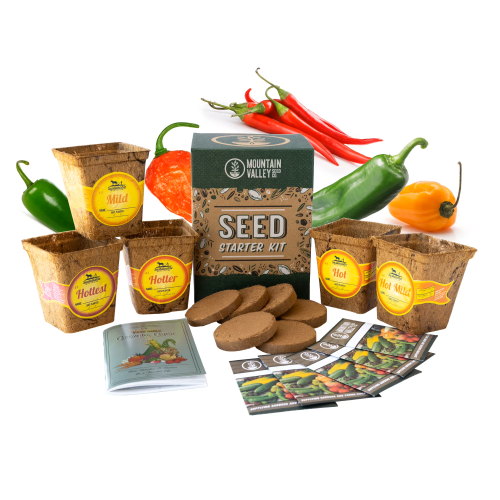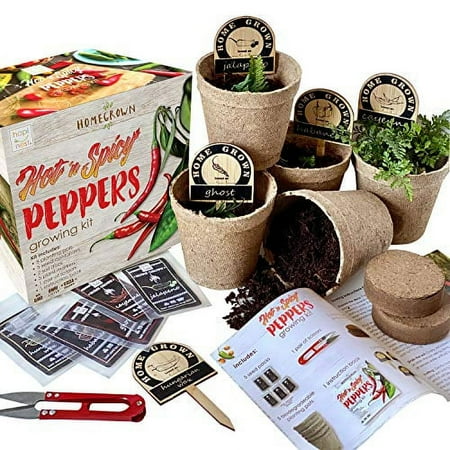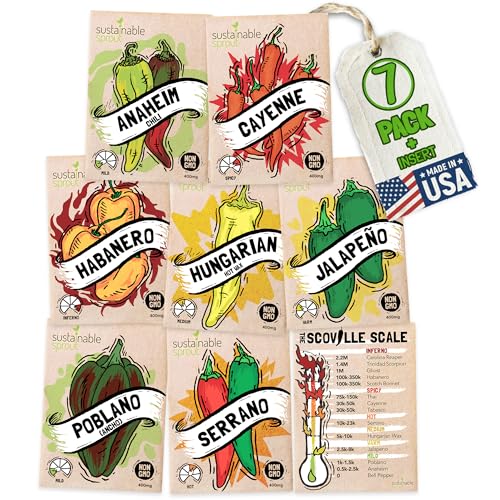5 of the hottest peppers to grow for fiery homegrown harvests – perfect for those who like it hot
These varieties should come with a warning
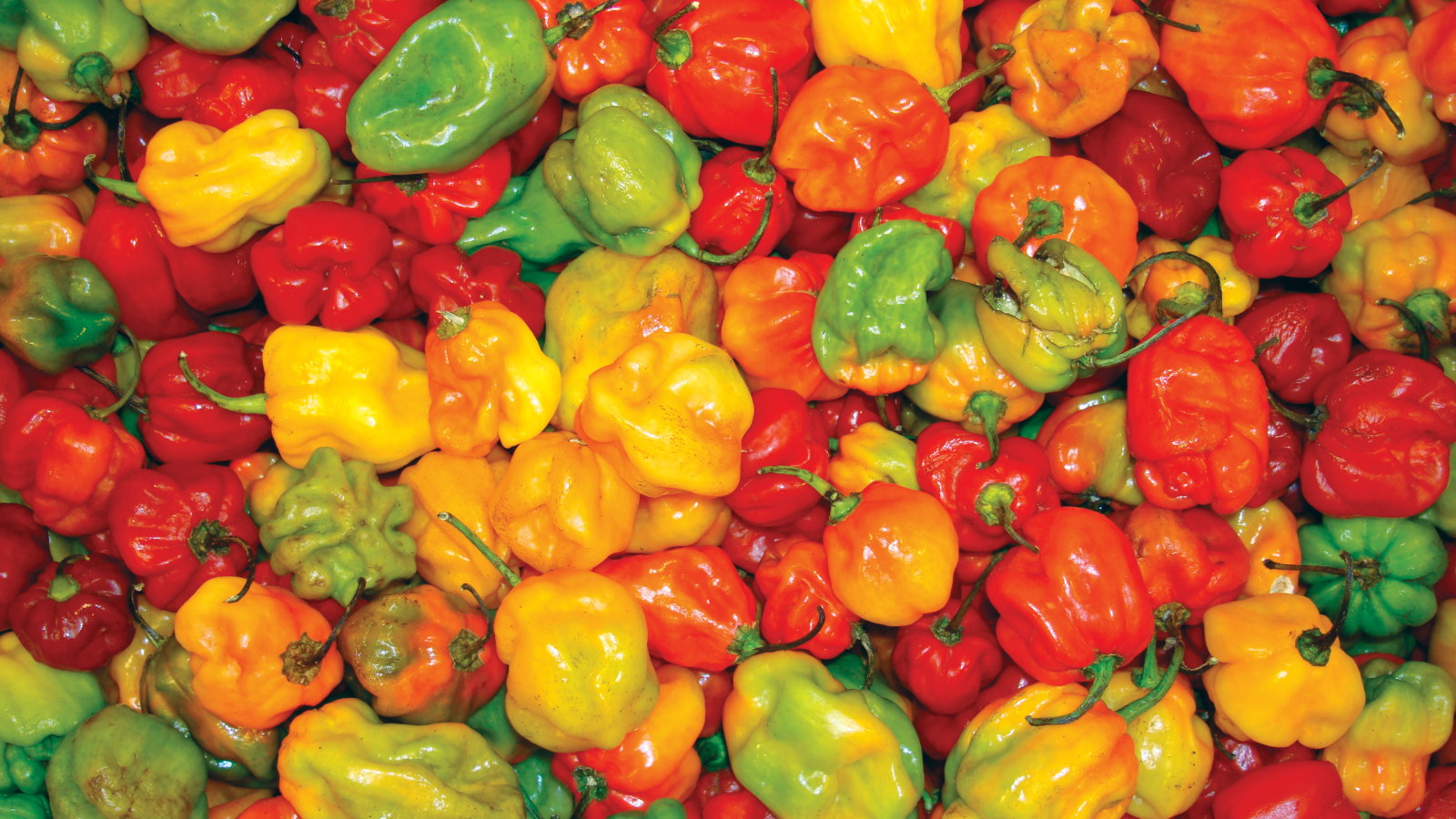
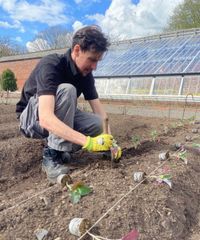
Do you prefer your peppers fiery? If so, this list is for you, as we look at the hottest peppers to grow at home. Perfect for anyone wanting to add some heat to their meals, you can readily source seeds of these picks to grow your own plants.
The current Guinness World Record holder is Pepper X at 2.69 million Scoville Heat Units (SHUs). However, you can't grow this chili pepper as it is a patented variety and not available as plants or seeds (though you may see some fakes online – so beware). But there are still some super-hot peppers you can buy to grow, including the previous world record holder.
Chili heat is measured in Scoville units, or SHUs, and this list ranks some of the hottest peppers to grow at home in terms of SHUs. If you want to try growing any of these types of chili peppers, we also recommend some tips for happy plants and great yields to fulfil all your culinary desires.
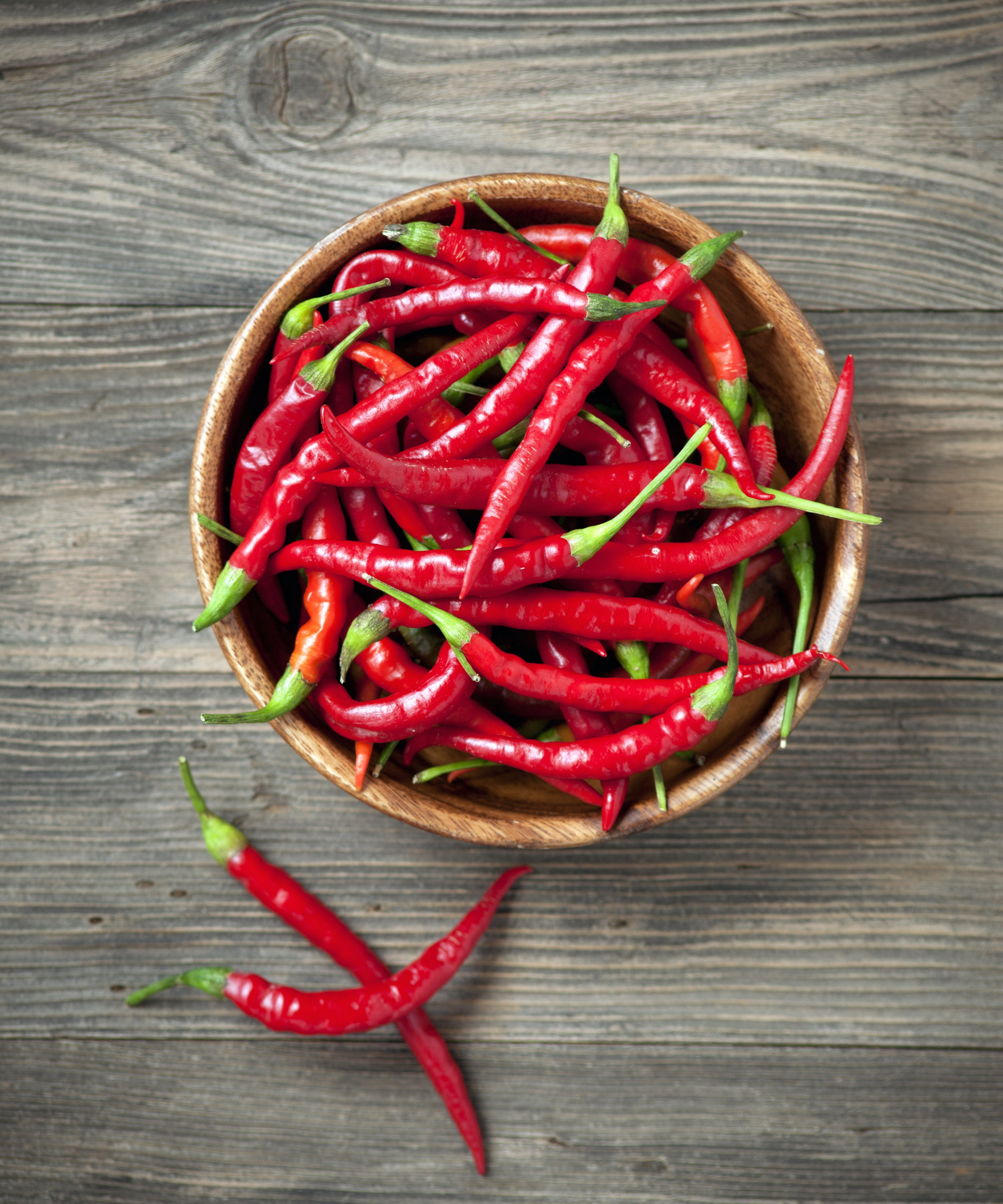
The hottest peppers to grow – a quick warning
You always want to wear plastic gloves when handling any of these hottest peppers to grow, which includes the seeds and the flesh. They contain the compound capsaicin, which gives the peppers their heat, and can cause skin inflammation or a burning sensation. It also causes pain if transferred to the eyes or other parts of the body.
To successfully grow chili peppers, they need a sunny location, ideally with 6-8 hours of direct sunlight per day and consistent daytime temperatures of 70-80°F. This can be outdoors in warmer climates or in a greenhouse to provide a warm and protected environment.
Providing the right light and heat helps you grow hotter peppers, as the fruits can reach full maturity and their optimum levels of heat. Other methods of ensuring your fruits get as hot as possible include letting peppers fully ripen on the plant for as long as possible and stressing the plants by growing them in drier conditions, which promotes more development of capsaicin.
Carolina Reaper
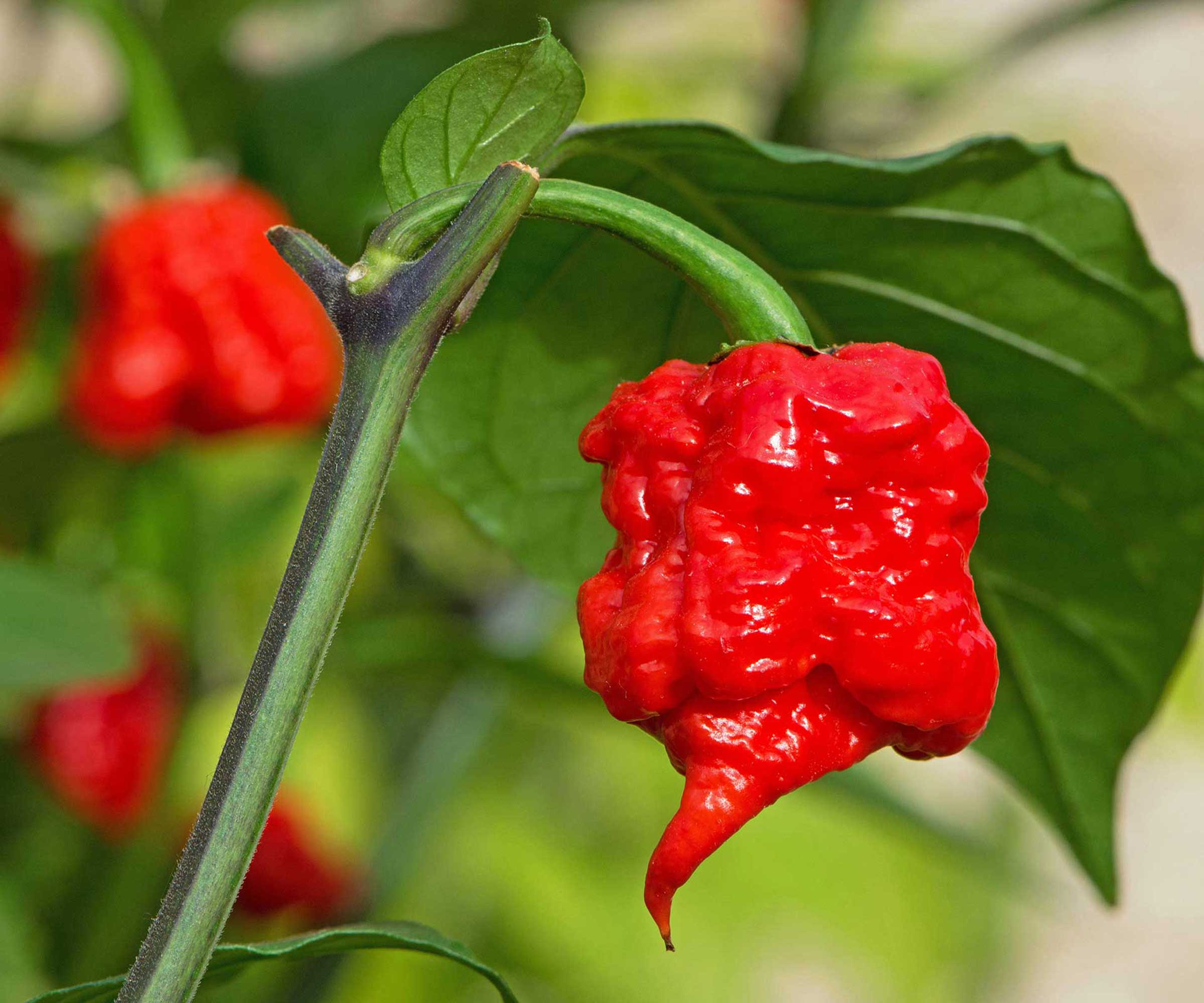
Scoville Rating: 1.5 - 2.2 million
Design expertise in your inbox – from inspiring decorating ideas and beautiful celebrity homes to practical gardening advice and shopping round-ups.
American pepper enthusiast and breeder Ed Currie (who also created Pepper X) developed the Carolina Reaper, and it was officially unveiled in 2012. A mix of a Pakistani Naga pepper and a Habanero from the Caribbean, it held the world record for the hottest chili pepper from 2013 to 2023.
The Carolina Reaper averages around 1.6 million SHUs, but can reach over two million. Of the hottest peppers to grow at home, this is the number one option. It is a vibrant red color and has a unique shape, with fruits 1-3 inches long having a bumpy texture and a pointed tail.
You can grow this fiery variety at home, with seeds commonly available that can provide you with harvests within 100-120 days from sowing.
For example, these Carolina Reaper seeds at Amazon come in packs of 10. Alternatively, you can get a complete Carolina Reaper growing kit, also at Amazon, that comes with seeds, coir discs, and peat pots.
Ghost peppers
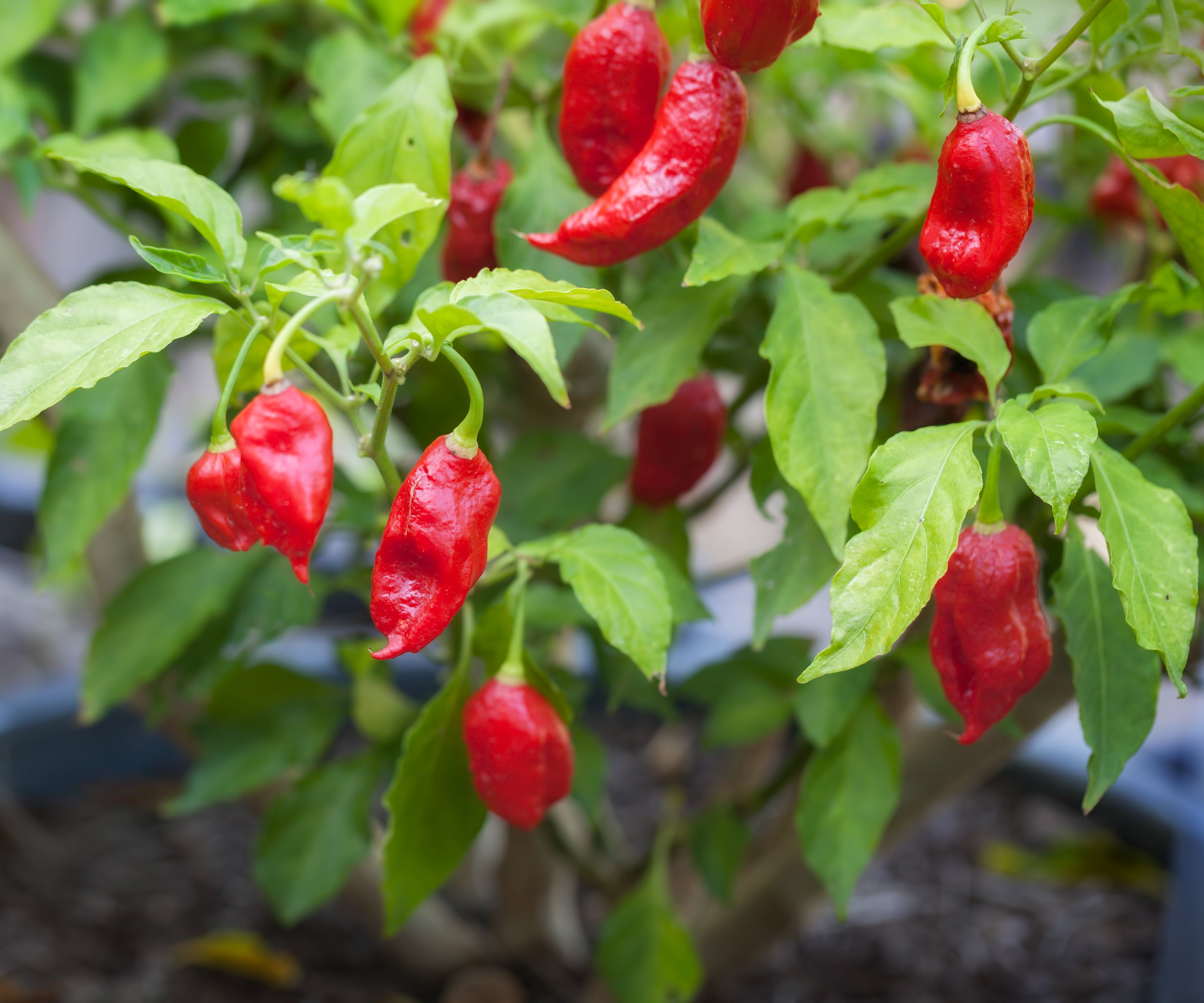
Scoville Rating: 855,000- 1,000,000+
Ghost peppers were cultivated in India and are also known as bhut jolokia (which translates as ghost pepper in English). It won the Guinness World Record for the hottest pepper in 2007 and held that title for four years.
Ghost peppers average around a million SHUs, and, despite having an intense heat, they do have a sweet, fruity flavor that makes them usable in cooking and for hot sauces. They come in shades of red, yellow, orange, or chocolate color, and there are both rough and smooth-skinned versions of the red varieties.
You can get Bhut Jolokia Ghost Pepper seeds at True Leaf Market if you want to grow this intense variety at home. The plants need a long growing season, so are best sown indoors up to 12 weeks before the last frost.
They also require consistent temperatures of 80-90°F to germinate, which often means the use of a heated propagator (like this propagation kit at Walmart). Ghost pepper plants reach 18-24 inches, so they are a good chili variety for containers.
Scorpion Pepper
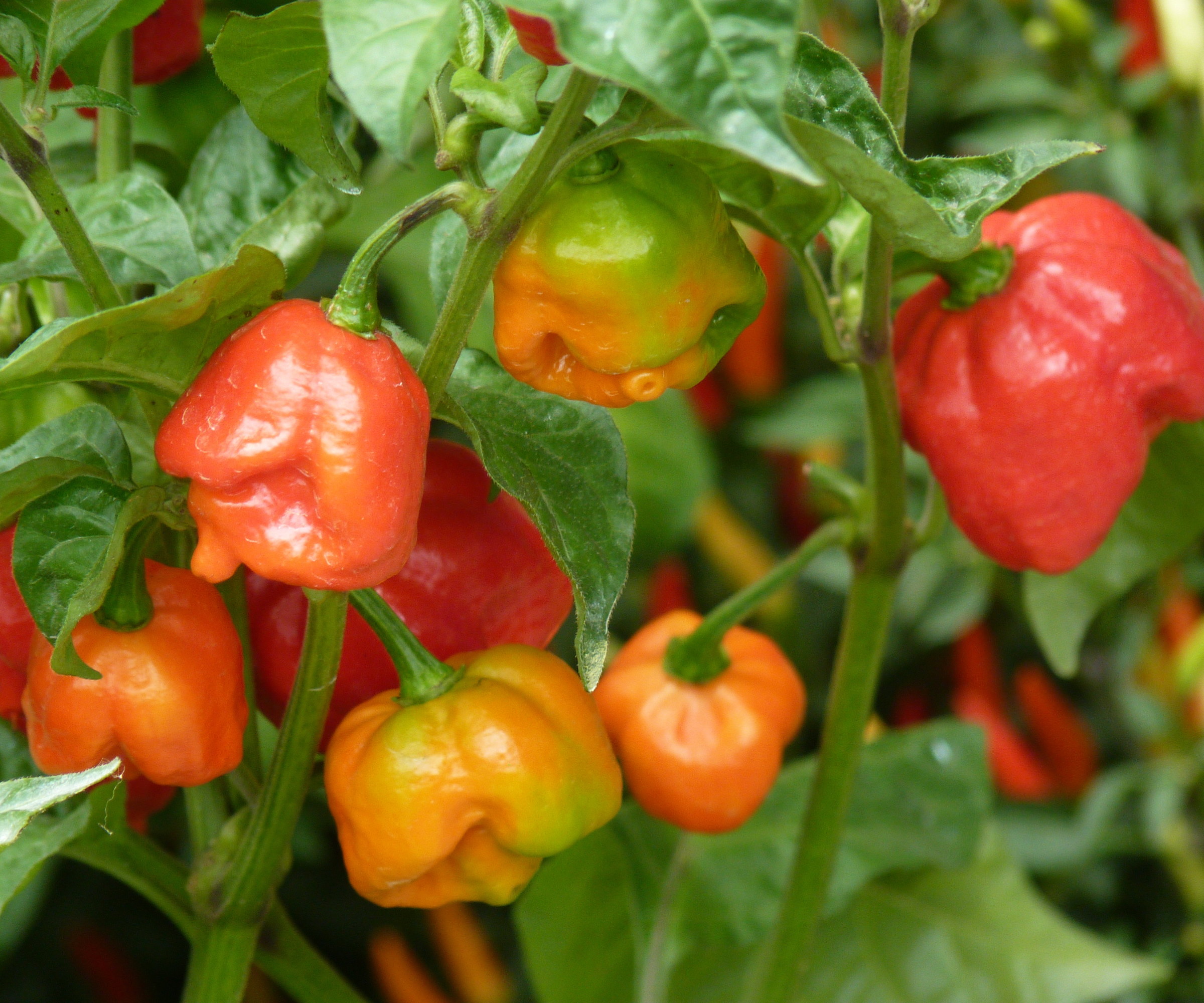
Scoville Heat Units: 300,000 - 1 million+
The Trinidad scorpion pepper is, perhaps unsurprisingly, native to Trinidad and Tobago. It hit the headlines in 2011 when the Trinidad Scorpion Butch T variety held the title of the hottest pepper.
Over the years, many new varieties have been created, and you can find seeds of different strains to grow at home, which range in heat levels. Many varieties are around 300,000 SHUs, but some types (like the Trinidad Scorpion Butch T variety) can surpass 1.2 million SHUs. The hottest is the Trinidad Moruga Scorpion, which hits 2 million SHUs.
Scorpion peppers tend to produce fruits 2-3 inches long, with the distinctive pointy scorpion's tail. The fruits ripen from green to red, but you can get yellow varieties. The plants are tall and reach up to four feet, so they do need support as they grow.
These Trinidad Scorpion Pepper Seeds at Amazon are related to the Butch T Scorpion, but without the tail. This gives the advantage of more flesh.
If you grow a Trinidad scorpion pepper, these extra-tall tomato cages at Amazon can be used to support plants and prevent them from flopping on the ground when laden with fruit.
Habanero
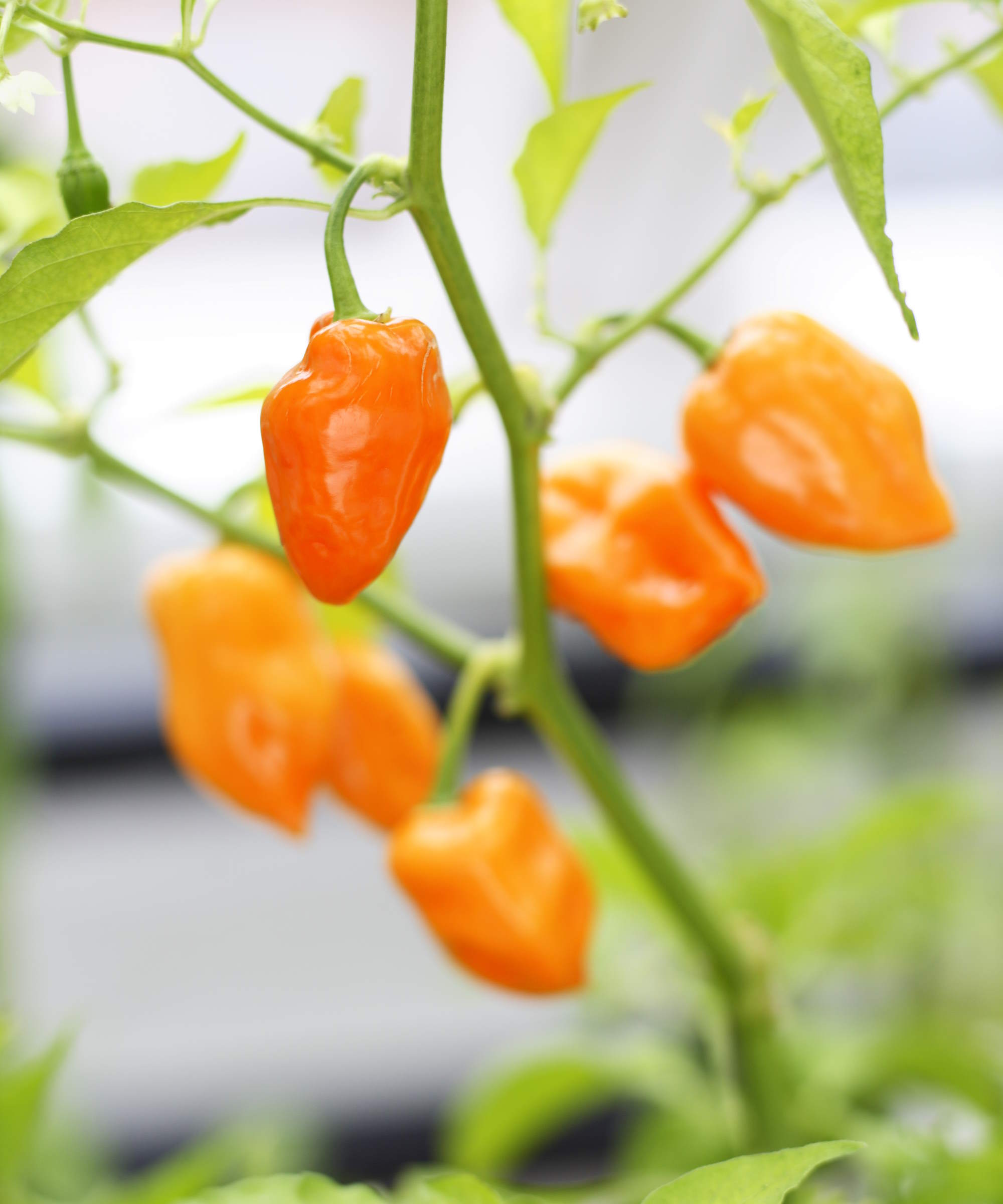
Scoville Rating: 100,000-350,000
Habanero peppers are named after the Cuban city of La Habana, commonly known as Havana in English. It used to top the list of the world's hottest peppers, but modern spicier rivals have taken more of the headlines since the turn of the millennium. However, it remains a very hot variety to grow at 100,000–350,000 SHUs.
Habaneros come in different colors, most commonly orange and red, but there are also white, brown, and yellow varieties. The orange habanero is the most common and has a sweet, smoky, and fruity spice that makes it popular in many dishes.
For those not seeking such a kick, some of the red varieties are not as hot and are ready to harvest sooner. However, take care, as there are also some red types, like the 'Red Savina' habanero, that are bred to be very hot. Take care when choosing varieties to grow, as the heat often depends on the type rather than solely color.
These orange Habanero Hot Pepper seeds at Burpee are ideal for salsas or sauces. Alternatively, for a bit of fun, you can get these Habanero Mix Pepper Seeds at True Leaf Market, which will result in fruits in six colors, so you can enjoy a range of different fruits with varying tastes and heat.
Scotch bonnet
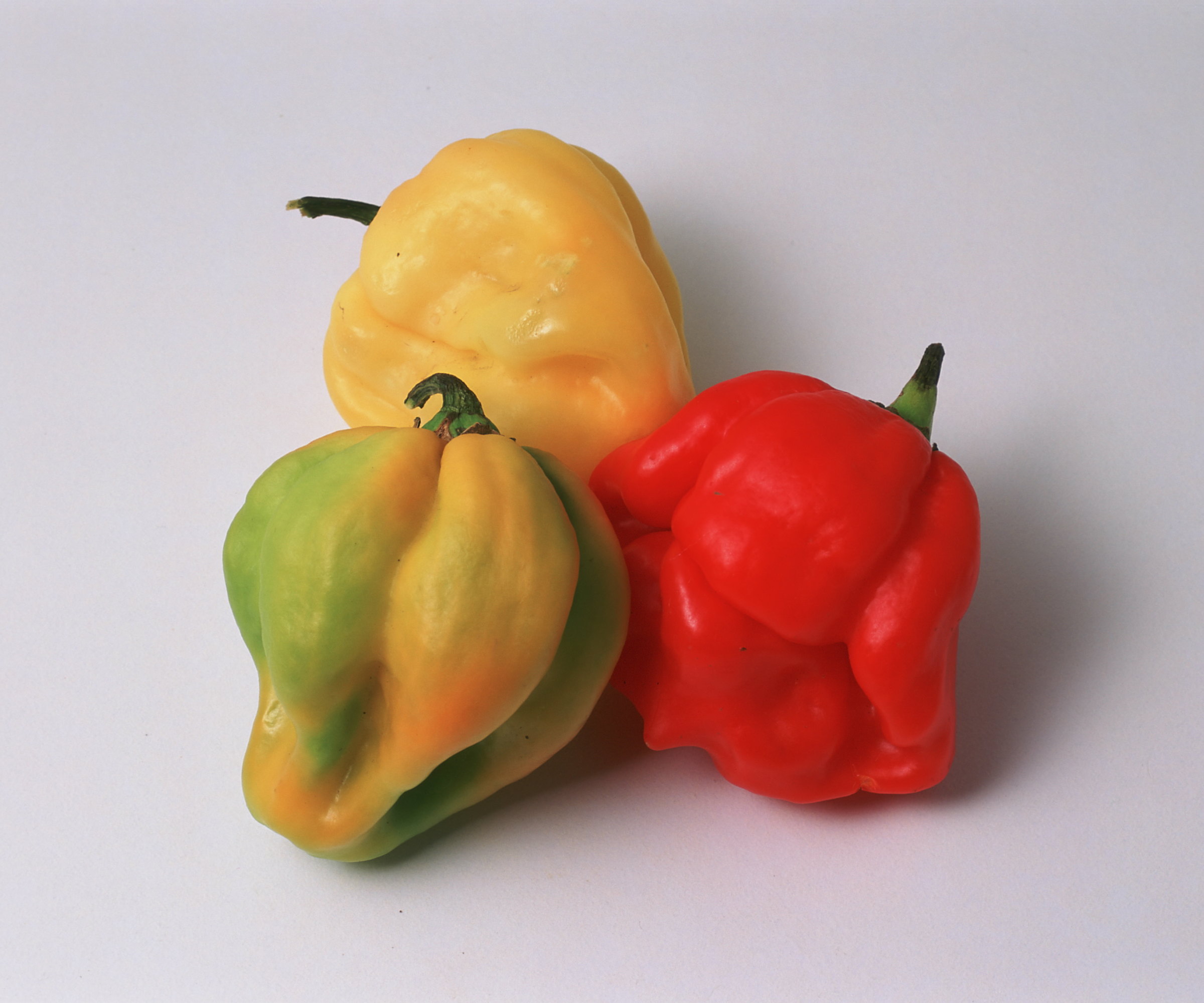
Scoville Rating: 100,000-350,000
The scotch bonnet is likely one of the most well-known of the hottest peppers to grow. It has been around for centuries and used in many cuisines, particularly in the Caribbean, where it is a staple in jerk and hot sauces.
Rather unusually for a pepper hailing from the Caribbean, the moniker scotch bonnet comes from the fact that its shape resembles a Scottish 'Tam o'Shanter' bonnet. With a wrinkled and squashed 'bonnet' shape, the fruits can range from one to two inches long and be yellow, green, or brown. The most common varieties mature from green to red.
A scotch bonnet chilli has a sweet, fruity, and fiery taste, offering a sweeter alternative to habaneros, with which it shares a heat profile. Scotch bonnet peppers offer the advantage of being high-yielding plants that remain a compact size.
These orange scotch bonnet seeds at Amazon will develop into plants 24 to 30 inches tall, making them suitable for raised beds or container gardens.
When you find a variety that you love, the good news is that peppers are one of the best vegetables for collecting seeds. Provided it is not a hybrid variety of chili, you can collect seeds from fully ripe peppers (remembering to wear gloves as mentioned earlier) and store them to sow again next year. With peppers, you only need to buy seeds once if you repeat the cycle of collecting seeds to sow again year after year.
Shop hot pepper growing kits
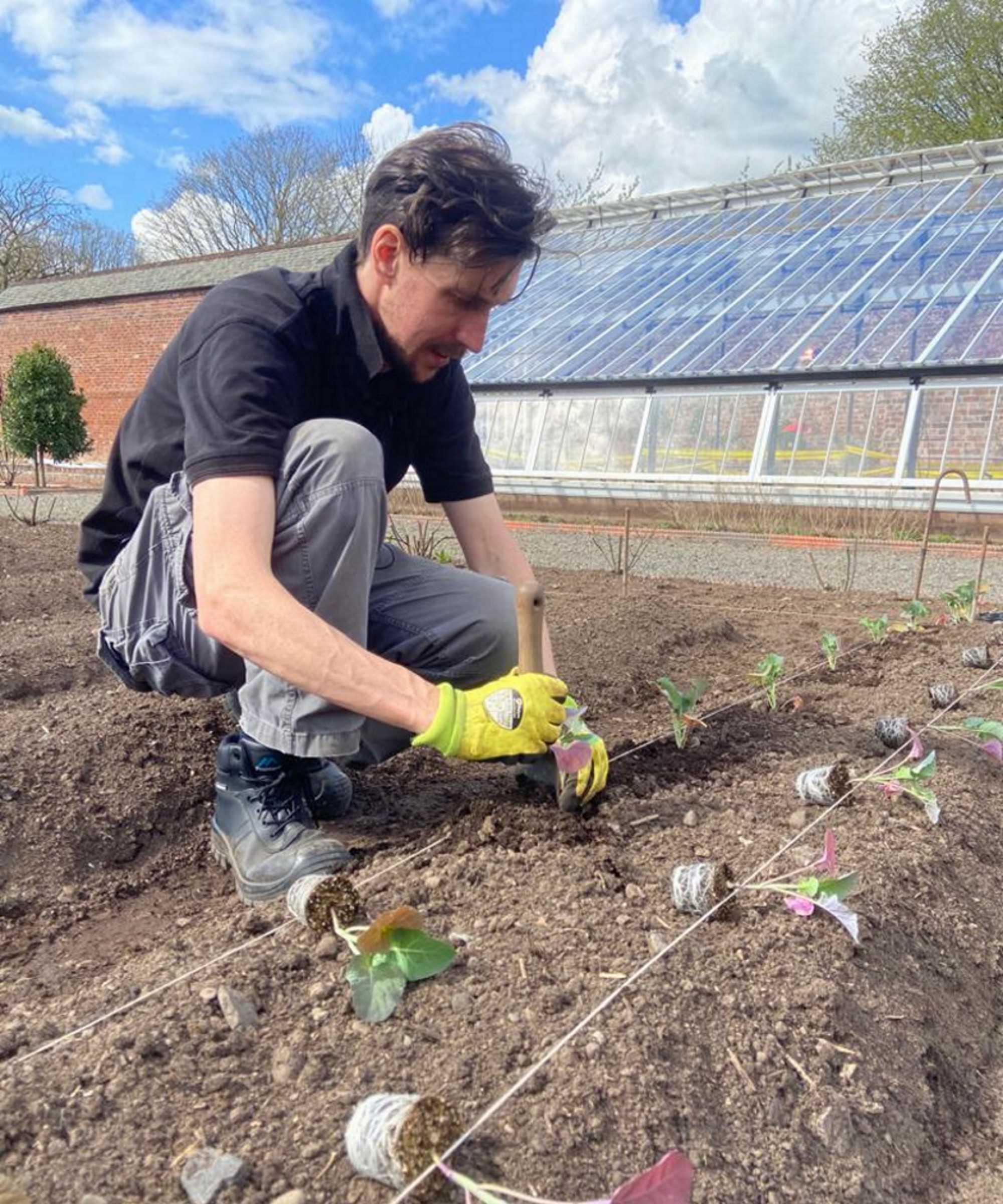
Drew has worked as a writer since 2008 and was also a professional gardener for many years. As a trained horticulturist, he worked in prestigious historic gardens, including Hanbury Hall and the world-famous Hidcote Manor Garden. He also spent time as a specialist kitchen gardener at Soho Farmhouse and Netherby Hall, where he grew vegetables, fruit, herbs, and cut flowers for restaurants. Drew has written for numerous print and online publications and is an allotment holder and garden blogger. He is shortlisted for the Digital Gardening Writer of the Year at the 2025 Garden Media Guild Awards.
You must confirm your public display name before commenting
Please logout and then login again, you will then be prompted to enter your display name.
